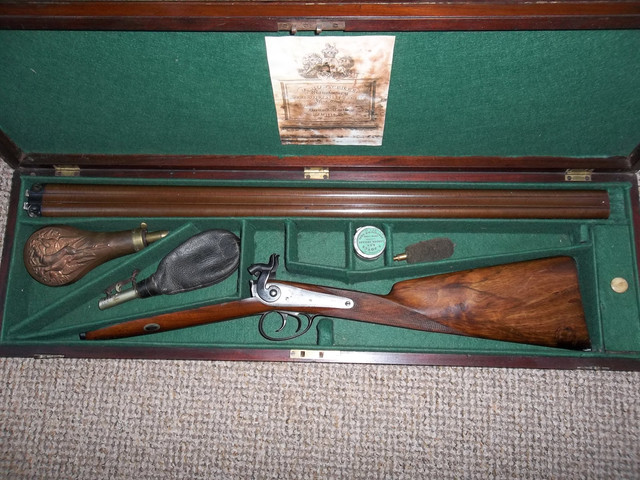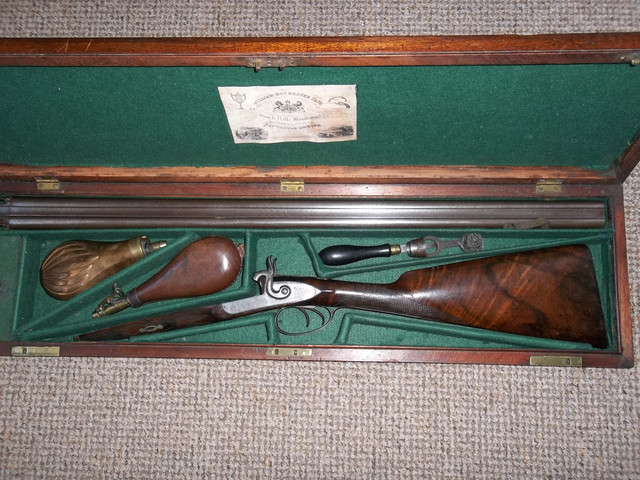For many decades I have restored many English Sporting Guns from flint to the modern breech loader.
On the flint and percussion guns which are from 250 to 150 years restoration must not be carried too far a gun of the age should look its age not something straight of the shelf today you find many restoration that have been carried to far. One part of restoration that is over done is the checkering which should only be cleaned by removing grime etc with a old tooth brush , if the checkering has worn away the gun should be left that way ,to recheck there is nothing worse than handling crisp checkering on a 150 +year gun .There is a golden rule on restoration if in doubt leave it be .
Feltwad
A stand of English Percussion Guns
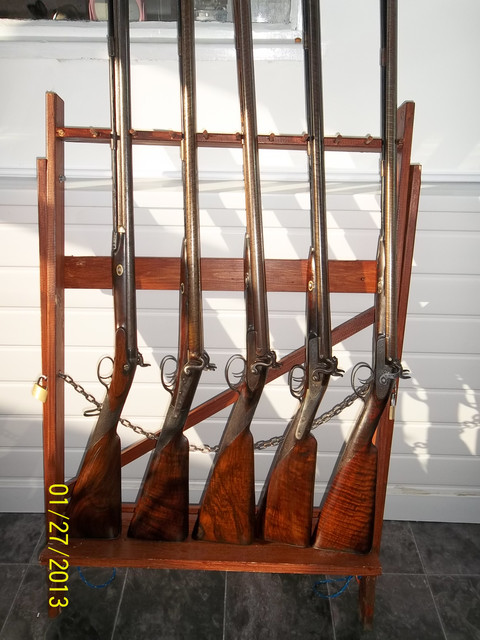
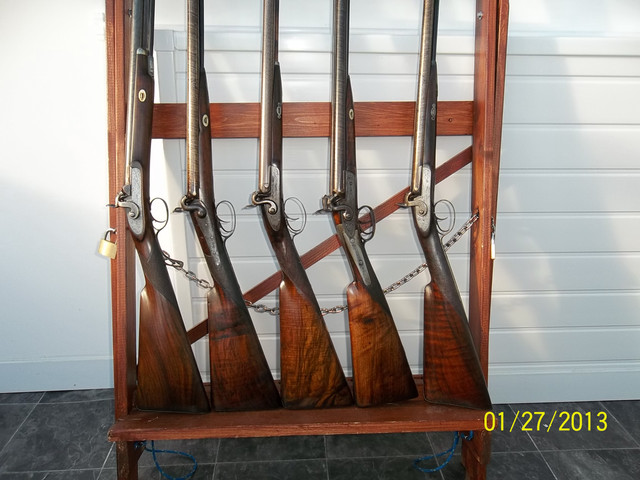
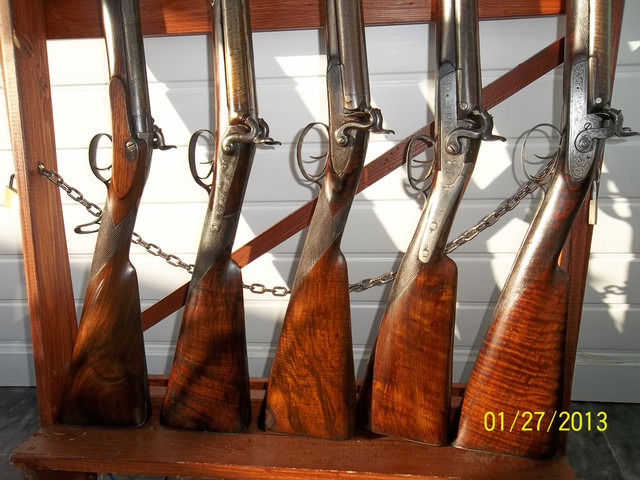
On the flint and percussion guns which are from 250 to 150 years restoration must not be carried too far a gun of the age should look its age not something straight of the shelf today you find many restoration that have been carried to far. One part of restoration that is over done is the checkering which should only be cleaned by removing grime etc with a old tooth brush , if the checkering has worn away the gun should be left that way ,to recheck there is nothing worse than handling crisp checkering on a 150 +year gun .There is a golden rule on restoration if in doubt leave it be .
Feltwad
A stand of English Percussion Guns








